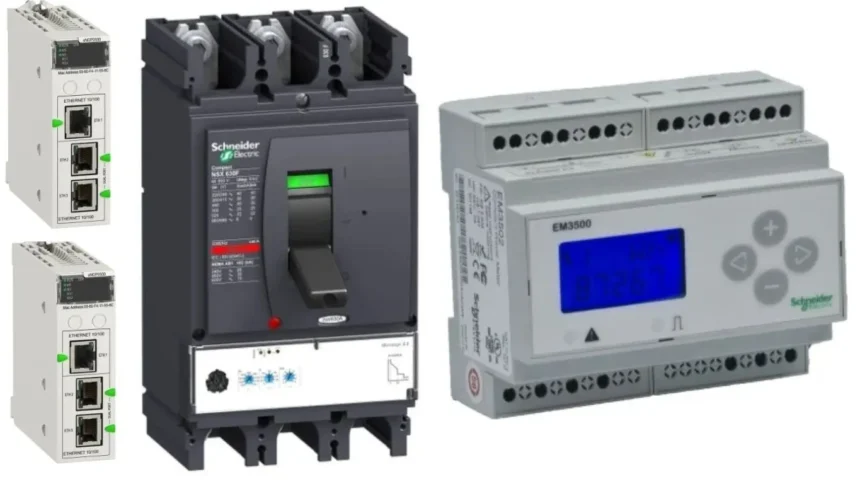Programmable sense regulators( PLCs) play a critical part in artificial robotization by icing effective control, monitoring, and operation of ministry. They serve as the backbone of colorful automated systems, allowing diligence to enhance productivity and reduce functional costs. In this composition, we will explore four essential PLC factors — BMXP342010, BMEH584040, XBTP022010, and 140DAO84210 — and their significance in ultramodern robotization systems.
What’s a PLC?
A Programmable Logic Controller( PLC) is an artificial computer designed to handle complex control functions in manufacturing and product surroundings. Unlike traditional computers, PLCs are erected to repel harsh conditions, including extreme temperatures, climate, and electromagnetic hindrance. They operate by entering inputs, recycling sense- grounded instructions, and generating applicable labors to control colorful bias.
Key PLC Components and Their Functions
BMXP342010 – A important Processing Unit
The BMXP342010 is a high- performance processor module used in Modicon M340 PLCs. It acts as the brain of the robotization system, executing sense control programs efficiently. Some of its crucial features include
- High- speed processing capability
- Support for multiple communication protocols
- Enhanced memory capacity for complex robotization tasks
- Advanced real- time response for critical operations
diligence similar as manufacturing, automotive, and food processing calculate on the BMXP342010 for flawless robotization and optimized performance.
BMEH584040 – High- Capacity Ethernet Processor
The BMEH584040 is an Ethernet processor module used in Modicon M580 PLCs, which provides enhanced connectivity and scalability. It enables real- time data exchange and remote monitoring, making it ideal for Assiduity 4.0 operations. Some benefits of the BMEH584040 include
flawless integration with artificial networks
- Advanced cybersecurity features
- High- speed communication for time-sensitive operations
- Support for spare armature for increased trustability
This processor is generally used in large- scale artificial shops, power generation installations, and smart manufacturing surroundings.
XBTP022010 – A stoner-Friendly HMI Panel
The XBTP022010 is a mortal- Machine Interface( HMI) panel designed to give drivers with real- time visualization and control of PLC operations. As an essential part of artificial robotization, it offers
- Intuitive touchscreen interface
- Easy navigation for drivers
- Real- time system diagnostics and covering
- comity with colorful PLC brands
The XBTP022010 is extensively used in control apartments, ministry panels, and plant bottoms to grease flawless mortal- machine commerce and enhance productivity.
140DAO84210 – A Digital Affair Module
The 140DAO84210 is a digital affair module that enables PLCs to control external bias similar as selectors, motors, and solenoids. It serves as a ground between the control sense and the physical tackle in robotization systems. crucial features include
- High- speed switching capability
- Reliable performance in demanding artificial surroundings
- comity with multiple artificial robotization operations
- Advanced energy effectiveness and functional stability
This module is pivotal for diligence that bear precise control over mechanical factors, similar as robotics, assembly lines, and conveyor systems.
PLCs in Artificial robotization
PLCs, along with technical modules like BMXP342010, BMEH584040, XBTP022010, and 140DAO84210, offer several advantages, including
- Increased effectiveness – PLCs automate repetitious tasks, reducing homemade labor and mortal error.
- Improved Safety – With real- time monitoring and control, PLCs help help outfit failures and dangerous conditions.
- Inflexibility and Scalability – ultramodern PLCs can be fluently reprogrammed and expanded to accommodate new robotization requirements.
- Cost Reduction – By optimizing energy use and minimizing time-out, PLCs contribute to cost savings in artificial operations.
Challenges Implementing PLC- Grounded robotization
While PLCs offer multitudinous advantages, their perpetration comes with challenges. original setup costs can be high, especially for large- scale robotization systems taking advanced PLC systems. Programming PLCs requires professed professionals who understand graduation sense, structured textbook, or function block plates. comity issues may arise when integrating PLCs with heritage systems, taking fresh configuration and testing. Regular conservation and firmware updates are necessary to insure long- term trustability and security.
Future of PLCs in Artificial robotization
As technology continues to advance, PLCs are evolving to meet the demands of Assiduity 4.0. ultramodern PLCs are equipped with enhanced communication capabilities, including Industrial Internet of effects( IIoT) integration for pall- grounded monitoring and analytics. The use of artificial intelligence( AI) and machine literacy( ML) in PLC programming is perfecting prophetic conservation and process optimization. Wireless connectivity and cybersecurity advancements are making PLCs more secure and adaptable to remote operations. The future of artificial robotization relies on the nonstop development of PLC technology to enable smarter and more effective manufacturing processes.
Conclusion
The integration of BMXP342010, BMEH584040, XBTP022010, and 140DAO84210 into artificial robotization systems enhances effectiveness, trustability, and connectivity. Whether it’s processing data, enabling high- speed communication, furnishing stoner-friendly interfaces, or controlling external bias, these factors are essential for ultramodern robotization results. As diligence continue to evolve, investing in advanced PLC technologies will be crucial to staying competitive and maximizing functional performance.



